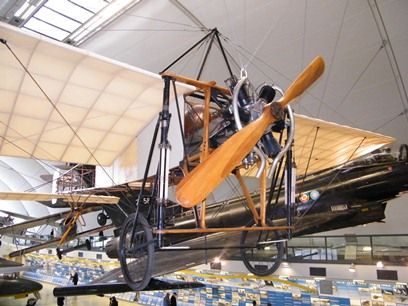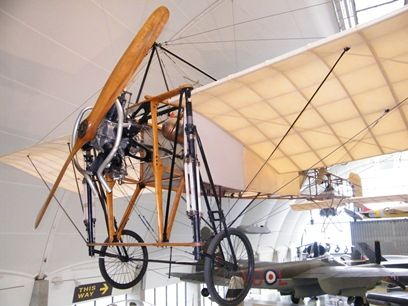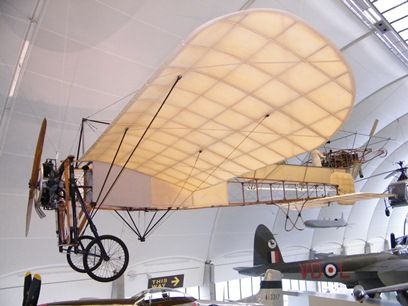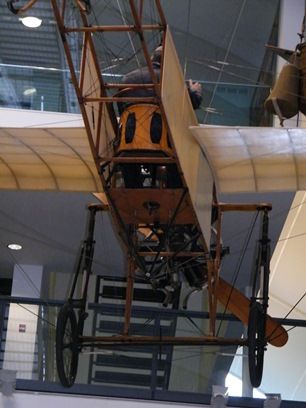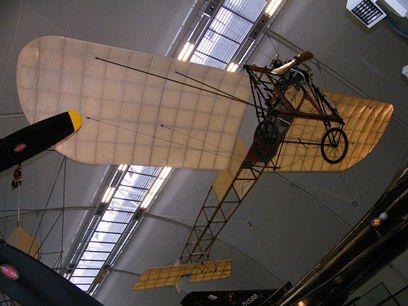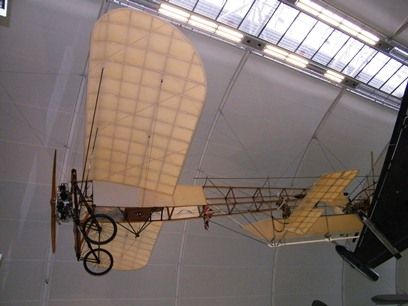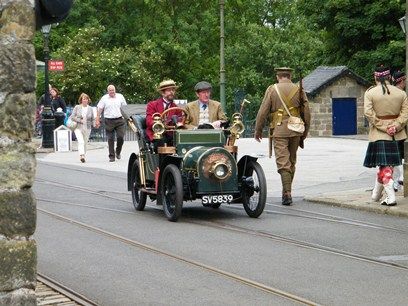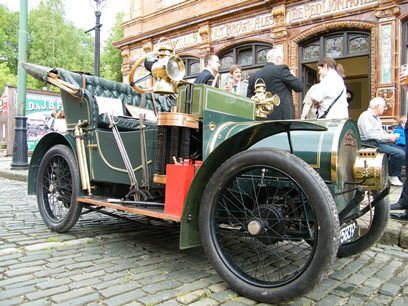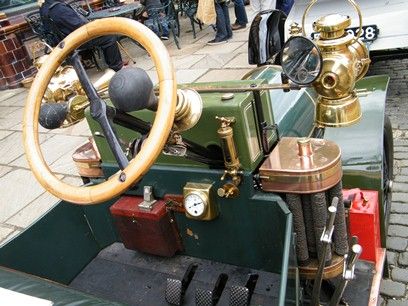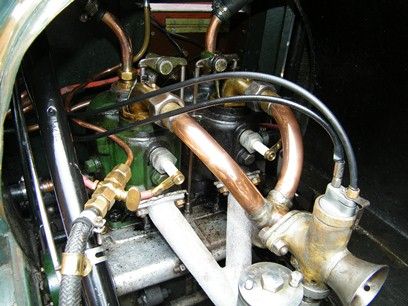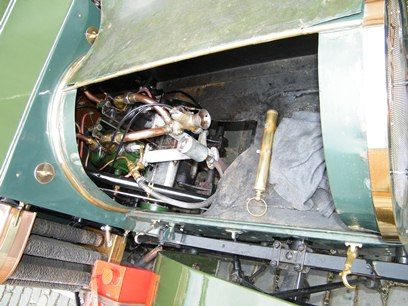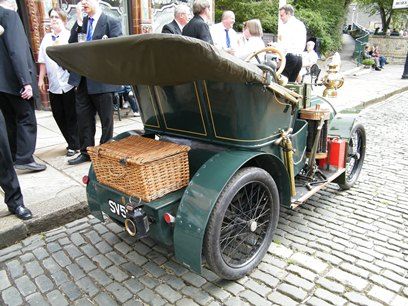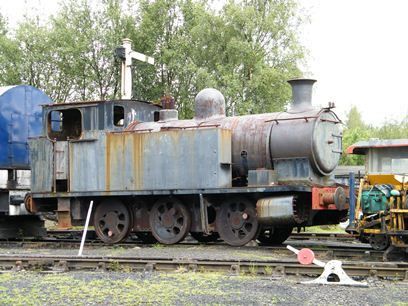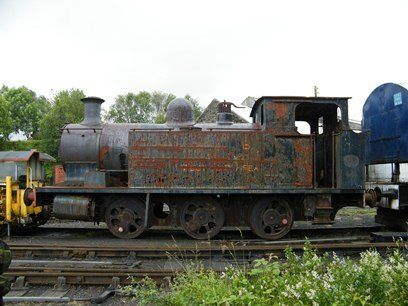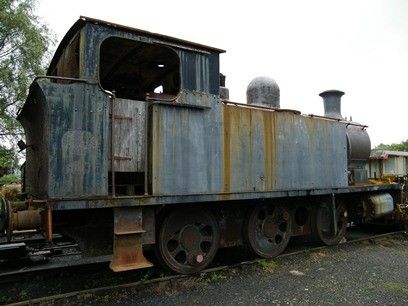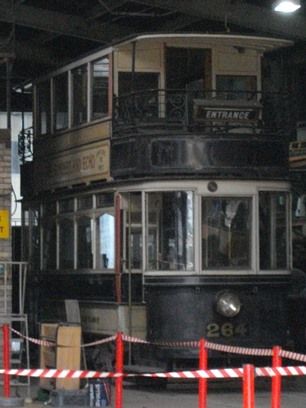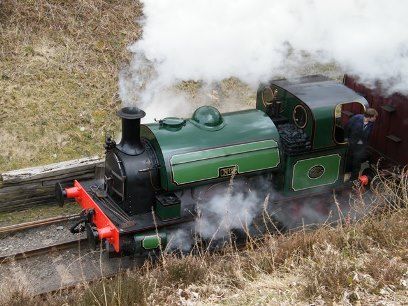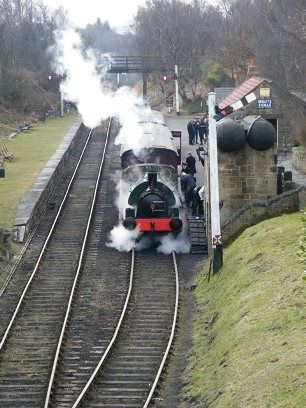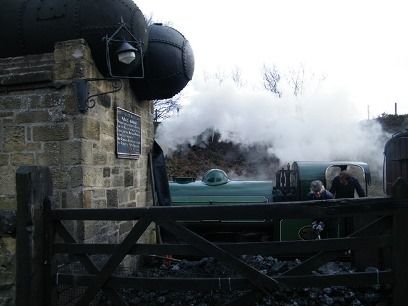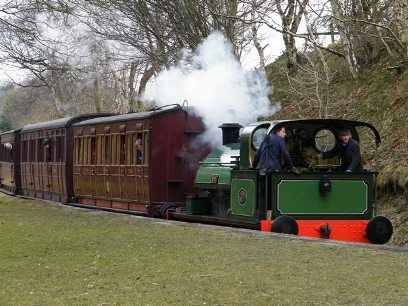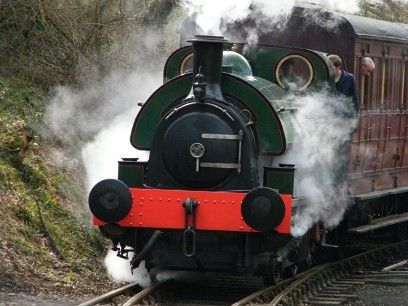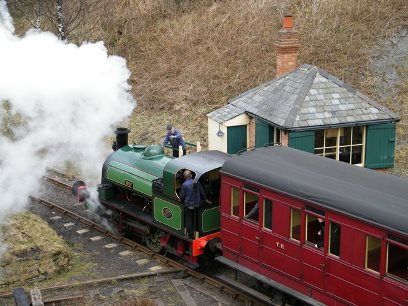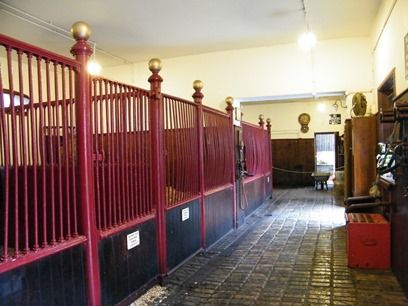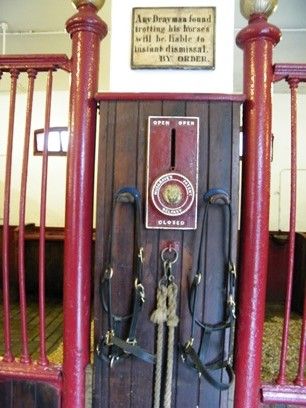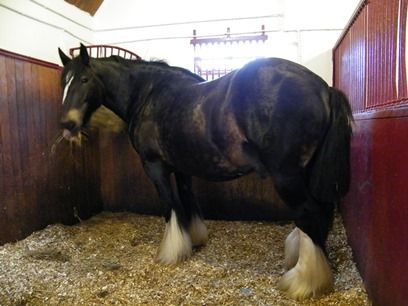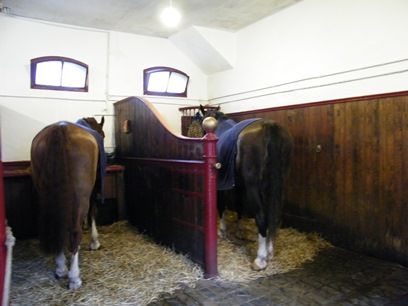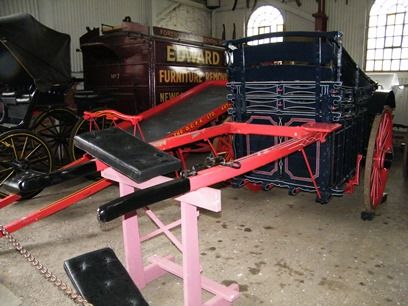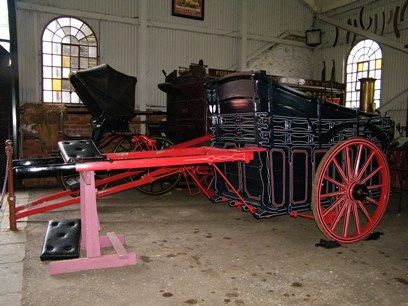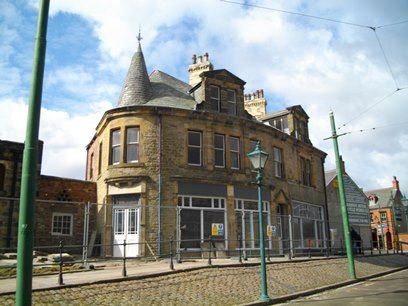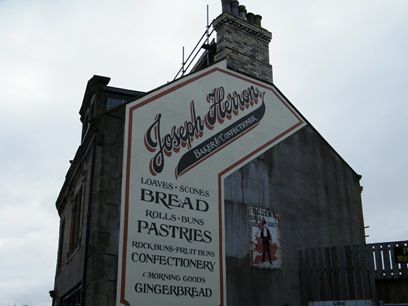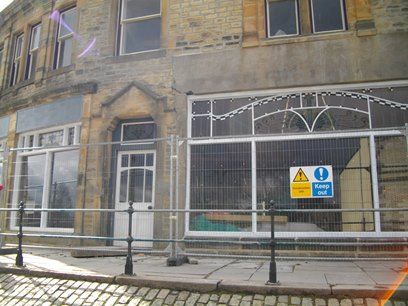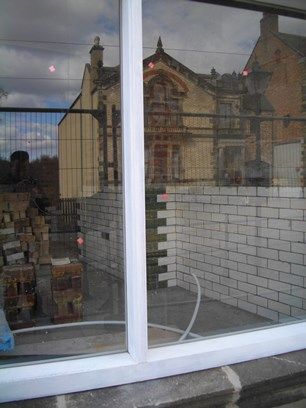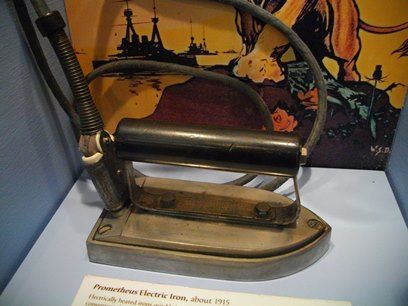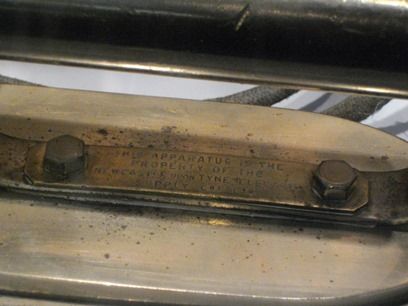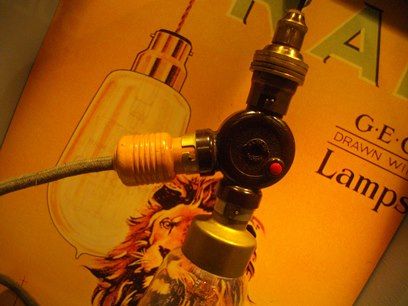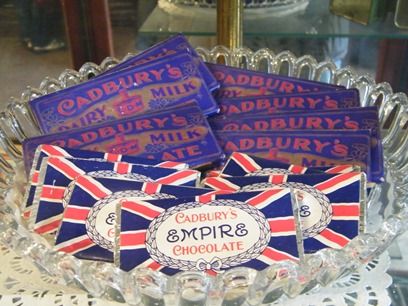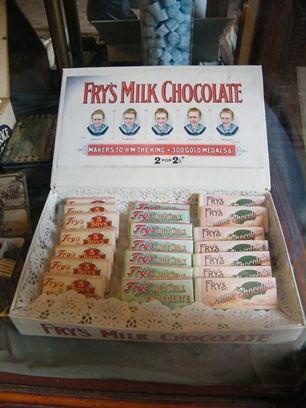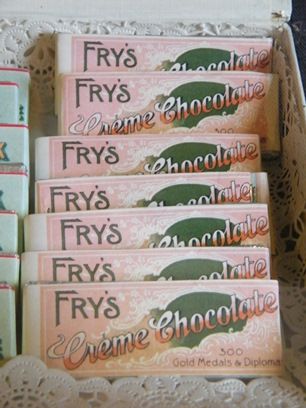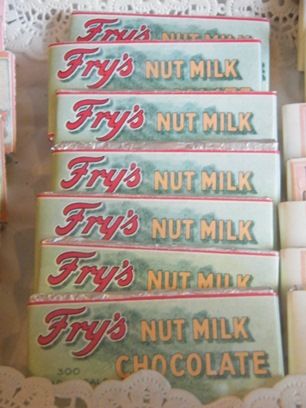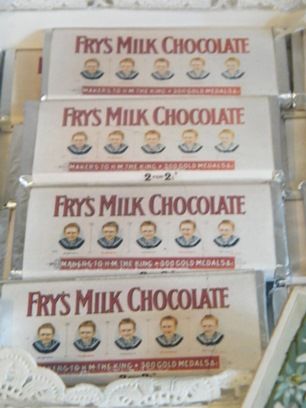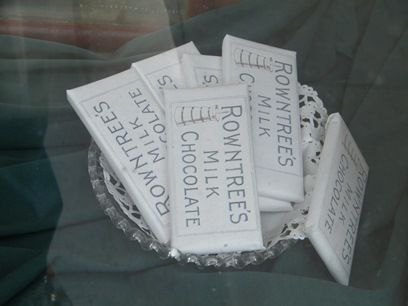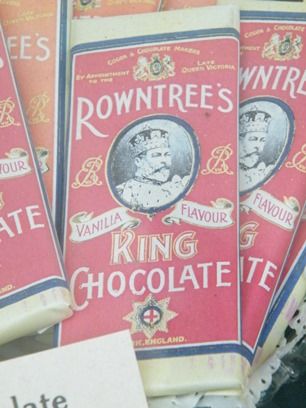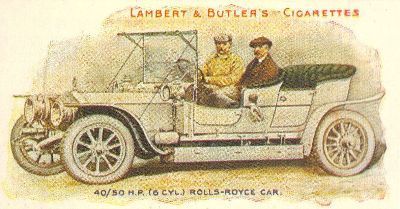This Bleriot XI is the same type (with a different engine) as that used by Louis Bleriot to cross the English Channel in 1909. It was a highly popular aeroplane, used for many pioneering flights, training, and as a general purpose aircraft. They were even used during WW1 for military purposes. This example, possibly constructors number 164, was built in 1910 and fitted with an Anzani 6 cylinder 60hp engine, introduced in the spring of 1910. The Anzani is an early radial engine - most engines of the period with the cylinders arranged in a circle like this are rotary engines, where the entire engine spins around with the propeller bolted on, whereas here the engine has a crankshaft which turns the propeller, so the engine stays stationary. Nothing is known of its history up until around 1935, when it was one of three Bleriots acquired by RGJ Nash in Le Havre, France, the others being an XI works number 54 (which was damaged in a German air raid on Brooklands in 1940 and parts of it possibly exist of it, or of another Bleriot, in the RAF Museum's Stafford storage facility) and XXVII constructors number 433 of 1911, which has featured on the blog before here - http://electric-edwardians.blogspot.co.uk/2011/09/bleriot-xxvii-1911.html
This aircraft was purchased from RGJ Nash's collection in 1953 by the Royal Aeronautical Society, and after storage in various places was put on permanent loan to the Royal Air Force in 1964, and after restoration was put on display, and since 2003 has been on display in the Milestones of Flight building at the RAF Museum Hendon, a fitting location for it. In 2004, the aircraft, along with other aircraft owned by the RAF from the Nash Collection was gifted to the RAF Museum itself.

